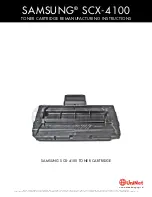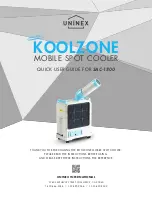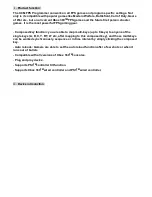
Page 2
For technical questions, please call 1-800-444-3353.
SKU 66242
Save This Manual
Keep this manual for the safety warnings and
precautions, assembly, operating, inspection,
maintenance and cleaning procedures. Write the
product’s serial number on the front page of the
user’s manual (or month and year of purchase if
product has no number). Keep this manual and the
receipt in a safe and dry place for future reference.
Safety Alert Symbol
and Signal Words
In this manual, on the labeling, and all other
information provided with this product:
This is the safety alert symbol. It is
used to alert you to potential personal
injury hazards. Obey all safety
messages that follow this symbol
to avoid possible injury or death.
DANGER indicates a hazardous situation which,
if not avoided, will result in death or serious injury.
WARNING indicates a hazardous situation which,
if not avoided, could result in death or serious injury.
CAUTION, used with the safety alert symbol,
indicates a hazardous situation which, if not
avoided, could result in minor or moderate injury.
NOTICE is used to address practices
not related to personal injury.
CAUTION, without the safety alert symbol, is used
to address practices not related to personal injury.
IMPORTANT SAFETY
INSTRUCTIONS
INSTRUCTIONS PERTAINING
TO A RISK OF FIRE,
ELECTRIC SHOCK, OR
INJURY TO PERSONS
WARNING – When using tools, basic precautions
should always be followed, including the following:
Work Area
a.
Keep the work area clean and well lighted.
Cluttered benches and dark areas increase the
risks of electric shock, fire, and injury to persons.
b.
Do not operate the tool in explosive atmospheres,
such as in the presence of flammable liquids,
gases, or dust.
The tool is able to create sparks
resulting in the ignition of the dust or fumes.
c.
Keep bystanders, children, and visitors away
while operating the tool.
Distractions are able
to result in the loss of control of the tool.
Personal Safety
a.
Stay alert. Watch what you are doing and
use common sense when operating the tool.
Do not use the tool while tired or under the
influence of drugs, alcohol, or medication.
A moment of inattention while operating the
tool increases the risk of injury to persons.
b.
Dress properly. Do not wear loose clothing or
jewelry. Contain long hair. Keep hair, clothing,
and gloves away from moving parts.
Loose
clothes, jewelry, or long hair increases risk of injury to
persons as a result of being caught in moving parts.
c.
Avoid unintentional starting. Be sure the switch
is off before connecting to the air supply.
Do not carry the tool with your finger on the switch or
connect the tool to the air supply with the switch on.
d.
Do not overreach. Keep proper
footing and balance at all times.
Proper footing and balance enables better
control of tool in unexpected situations.
e.
Use safety equipment.
A dust mask, non-skid safety
shoes and a hard hat must be used for the applicable
conditions. Wear heavy-duty work gloves during use.
f.
Always wear eye protection.
Wear ANSI-approved safety goggles.
g.
Always wear hearing protection when
using the tool.
Prolonged exposure to high
intensity noise is able to cause hearing loss.






























